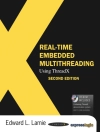This Springer Brief focuses mainly on the basic theory and applications of massive MIMO in 5G networks. The significance of massive MIMO for 5G or future communications is first briefly discussed. Then, the basic theory of massive MIMO technology is comprehensively analyzed, i.e., a variety of 5G scenarios and their improvements are described when massive MIMO is taken into account. Art physical-layer techniques and various networking techniques for interference mitigation and resource scheduling are introduced as well. This Springer Brief also examines the selected applications of massive MIMO in 5G networks, i.e., massive MIMO-aided millimeter communications and energy transfer. The physical-layer design, multiple access control (MAC) mechanism and networking techniques are discussed for millimeter-wave communications aided by massive MIMO technology. Then, massive MIMO is covered for hybrid information and energy transfer. A downlink precoder and a uplink pilot scheme is proposed for single cell networks, and both non-cooperative and cooperative energy transfer in multi-cell are presented.
Communication researchers in the area of MIMO technology, as well as researchers and practitioners working in millimeter communications and energy transfer seeking new research topics, and topic areas with communication system design, centralized and distributed algorithms, will find this brief useful as a reference. Advanced-level students studying communication engineering will also find this book useful as a secondary text.
İçerik tablosu
1 Overview.- 2 Massive MIMO Technology.- 3 Massive MIMO-Aided Millimeter Communication Networks.- 4 Massive MIMO-Assistant Energy Transfer Networks.- 5 Conclusion and Outlook.
Yazar hakkında
Long Zhao is currently a lecturer of Beijing University of Posts and Telecommunications (BUPT). He got his B.S, M.S. and Ph. D degree from China in 2008, 2011 and 2015, respectively. He was a research scholar in Engineering School of Columbia University, US from Apr. 2014 to Mar. 2015. He joined BUPT in 2015 as lecturer. His research interests are Smart Communications and Massive Signal Processing. He has published more than 40 papers in significant journals and international conferences. Hui Zhao is currently an associate professor in Beijing University of Posts and Telecommunications (BUPT), China. She received her M.S degree in 2003 from Tianjin University and Ph.D. degree in 2006 from Beijing University of Posts and Telecommunications (BUPT). She has published more than 50 papers as well as patent applications, and has taken part in a large number of research projects. Her research interests include 5G communications, intelligent hardware and green communications.
Kan Zheng is currently a professor in Beijing University of Posts &Telecommunications (BUPT), China. He received the B.S., M.S. and Ph.D degree from, China, in 1996, 2000 and 2005, respectively. He is author of more than 200 journal articles and conference papers in the field of communication signal processing, resource optimization in wireless networks, M2M/V2V networks and so on. He holds editorial board positions for several IEEE/non-IEEE journals. He has organized several special issues in famous journals. He has also served in the Organizing/TPC Committees for more than 20 conferences such as IEEE PIMRC, IEEE VTC and so on.
Wei Xiang is currently a professor of James Cook University, Cairns, Australia. He received the B.Eng. and M.Eng. degrees, both in electronic engineering, from the University of Electronic Science and Technology of China, Chengdu, China, in 1997 and 2000, respectively, and the Ph.D. degree in telecommunications engineering from the University of South Australia, Adelaide, Australia, in 2004. During Aug. 2012 and Mar. 2013, He was an Endeavour visiting associate professor at the University of Hong Kong. He received the Best Paper Award at 2011 IEEE WCNC. His research interests are in the broad area of communications and information theory, particularly coding and signal processing for multimedia communications systems.












